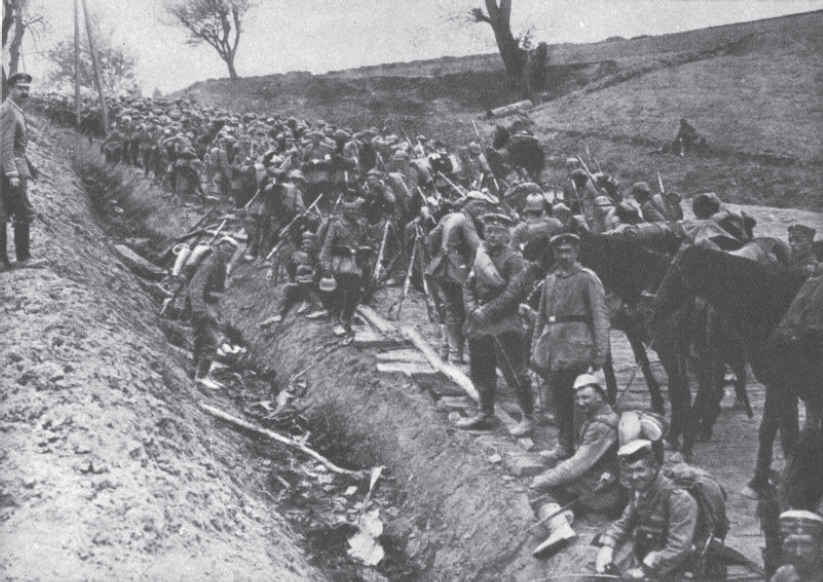
CHAPTER 3
LILLE, ANTWERP AND BEYOND
FROM THE PREFACE TO ‘THE GERMANS AT YPRES’
BY OTTO SCHWINK
The transport of the XXII, XXIII, XXIV, XXVI and XXVII Reserve Corps to the Western Front began on 10th October, and the 6th Bavarian Reserve Division followed shortly after. Only comparatively few experienced commanders were available for the units, and it was left to their keen and patriotic spirit to compensate as far as possible for what the men still lacked to play their part in the great struggle.
The situation of the armies on the Western Front at this time was as follows. In the neighbourhood of Lille the northern wing of the Sixth Army was fighting against an ever-increasing enemy. On 9th October, Antwerp, in spite of its strong fortifications and garrison, was taken after a twelve days’ siege directed by General von Beseler, commanding the III Reserve Corps, and well known in peace time as Chief of the Engineer Corps and Inspector-General of Fortifications. The victorious besiegers had carried all before them. As they were numerically insufficient to Invest Antwerp on the west, south and east, a break-through was attempted on a comparatively narrow front. It was completely successful, and Antwerp was occupied; but the main body of the Belgian army, in good fighting order, was able to escape westwards along the coast, to await the arrival of British and French reinforcements behind the Yser. Only about 5,000 Belgians were taken prisoner, but some 20,000 Belgian and 2,000 British troops were forced into Holland. In consequence of this new situation, and of the reports of hostile concentrations in the area Calais-Dunkirk-Lille, the German General Staff decided to form a new Fourth Army under Duke Albert of Würtemburg. It was to be composed of the XXII, XXIII, XXVI, and XXVII Reserve Corps, and was joined later on by the III Reserve Corps with the 4th Ersatz Division. By 13th October the detainment of this new Army was in full progress west and south-west of Brussels. On the evening of 14th October the four Reserve Corps began their march to the line Eecloo (fifteen miles east of Bruges) – Deynze – point four miles west of Audenarde.
In the meantime we had occupied the fortified town of Lille. It had been entered on 12th October by part of the XIX Saxon Corps and some Landwehr troops, after the town had suffered considerably owing to the useless efforts of French territorial troops to defend it. The order to the garrison was: ‘The town is to be held till the Tenth French Army arrives’; it resulted in the capture of 4,500 French prisoners, who were sent to Germany. On the 14th the right wing of the Sixth Army, consisting of the XIII Würtemburg and XIX Saxon Corps, pushed forward to the Lys, behind a screen of three Cavalry Corps. They took up a position covering Lille, from Menin through Comines to Warneton and thence east of Armentières, where they came into touch with the 14th Infantry Division which was further south near the western forts of Lille. To the north of the Sixth Army, the III Reserve Corps, with its three divisions from Antwerp, was advancing westwards on a broad front. By the 14th it had driven back the hostile rear guards and reached a line from Bruges to near Ghent. Airmen and reconnaissance detachments had recognized movements of large bodies of troops about Hazebrouck, Lillers and St. Omer and reported disembarkations on a big scale at Dunkirk and Calais. In addition to this, considerable hostile forces had reached Ypres, and appeared to be facing more or less southwards opposite the northern wing of the Sixth Army.
An order issued on 14th October, by the Chief of the German General Staff, gave the following instructions for the German forces between Lille and the sea. The Sixth Army was at first to remain entirely on the defensive along the line Menin-Armentières-La Bassée and to await the attack of our new Fourth Army against the left flank of the enemy. The offensive action of the Fourth Army after its deployment was to be so directed that the III Reserve Corps, which now belonged to it, should move as its right wing in echelon along the coast, whilst its left was to advance through Menin.
In accordance with these orders the III Reserve Corps occupied Ostend on the 15th, its left wing reaching the line of the Thourout-Roulers road. The Corps was then ordered not to advance further for a few days, so as to avoid the attention of the British and French, who were advancing against the north wing of the Sixth Army, being drawn prematurely to movements in this neighbourhood. Only patrols therefore were sent out to reconnoitre across the Yser and the canal south of it. On the 17th the XXII, XXIII, XXVI and XXVII Reserve Corps reached the line Oostcamp (south of Bruges)-Thielt--point six miles east of Courtrai. On the advance of these four new Corps, the III Reserve Corps was to draw away to the right wing, and during the 17th and the following morning it moved up to the sector of attack allotted to it immediately south of the coast, and cleared the front of the Fourth Army. The reconnaissance activity of the previous days had in places led to severe fighting, especially on the southern wing in front of the 6th Reserve Division. It was found that the Belgian rearguards still held part of the ground east of the Yser and of the canal to Ypres. Any attempt to advance beyond this water-barrier was out of the question, as the bridges had been blown up and the whole line put in a state of defence.
The screening of the advancing Fourth Army by the III Reserve Corps was a brilliant success. At midday on the 18th, Field-Marshal French, who was to direct the enemy’s attack from the line of the Yser, was still in ignorance of our new Army. He believed he had time to prepare for his attack, and his only immediate care was to secure the line from Armentières to the sea for the deployment. After the events on the Marne, Field-Marshal French had particularly requested General Joffre, the Allied commander, that he might be placed on the northern flank of the line. He would then be close to Calais, which had already become an English town, he would be able to protect the communications to his country; and, further, the fame to be gained by a decisive and final victory attracted this ambitious commander to the north. As a result the II British Corps under General Smith-Dorrien was now in action against the strong German positions between Vermelles (four miles south-west of La Bassée) and Laventie (west of Lille). Further to the north the III British Corps was fighting against the Saxons advancing from Lille and our I, II and IV Cavalry Corps. The I British Cavalry Corps was covering the hostile advance on the line Messines-Gheluvelt, south-east of Ypres. Immediately to the north again, the newly formed IV British Corps, consisting of the 7th Infantry Division and 3rd Cavalry Division, had arrived in the area Gheluvelt–Zonnebeke, pursued in its retreat by von Beseler’s columns (III Reserve Corps). On its left the I British Corps had marched up to Bixschoote, and the gap between this place and Dixmude had been closed by a French Cavalry Division which connected up with the Belgian Army. The last, reinforced by two French Territorial divisions, was engaged in preparing the line of the Yser up to the sea for the most stubborn defence. These strong forces were to cover the arrival of the VIII and X French Corps and were to deliver the first blow against our supposed right wing.
On the 18th one of our cyclist patrols which had gone out far in advance of its Corps was surrounded near Roulers, and it was only by its capture that the enemy definitely discovered the arrival of the new German Corps, whose formation, however, had not been unknown to him, thanks to his good Secret Service system. Field-Marshal French was now confronted with a new situation. The preparations for his big attack were not yet completed. The superiority of the masses already concentrated did not yet appear to him to be sufficient to guarantee success against the enemy’s advance. The British commander therefore decided to remain on the defensive against our new Fourth Army, until the completion of the French concentration. His line was already closed up to the sea, it was naturally strong, and fresh troops were arriving daily. The danger threatening Dunkirk and Calais had the effect of making England put forth her full energy; the British troops fought desperately to defend every inch of ground, using every possible means to keep up the sinking spirits of the Belgians. They demanded and received rapid assistance from the French, and were backed up by fresh reinforcements from England.

German troops resting in a sunken road.
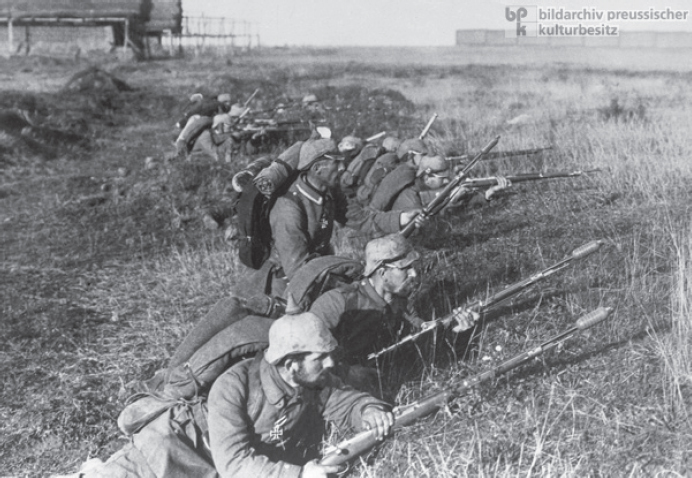
German infantry take up defensive positions 1914.
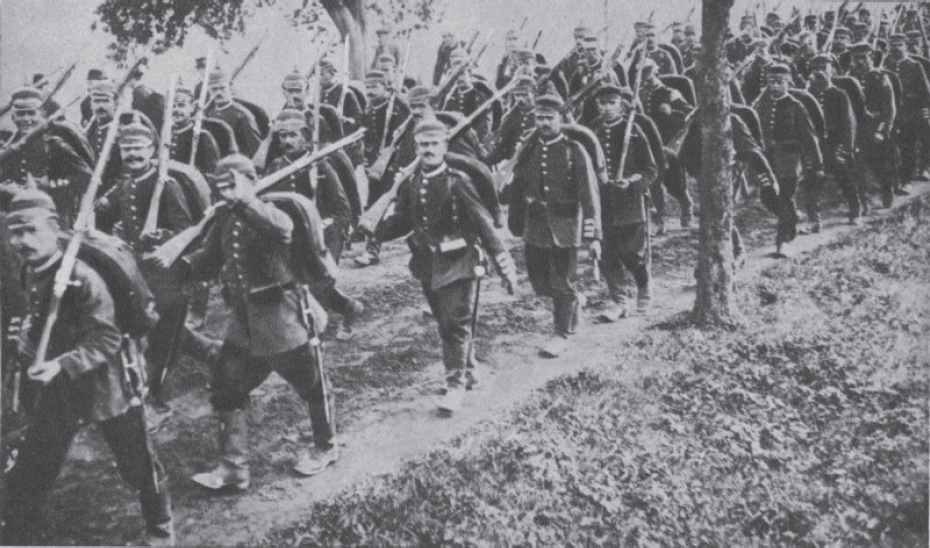
German troops marching through Belgium 1914.
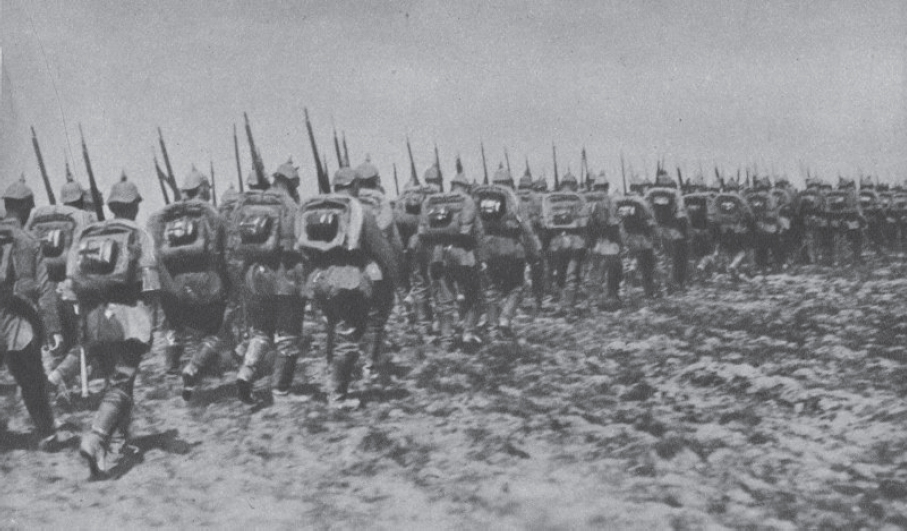
German troops in full kit crossing open fields during the invasion of Western Europe 1914.
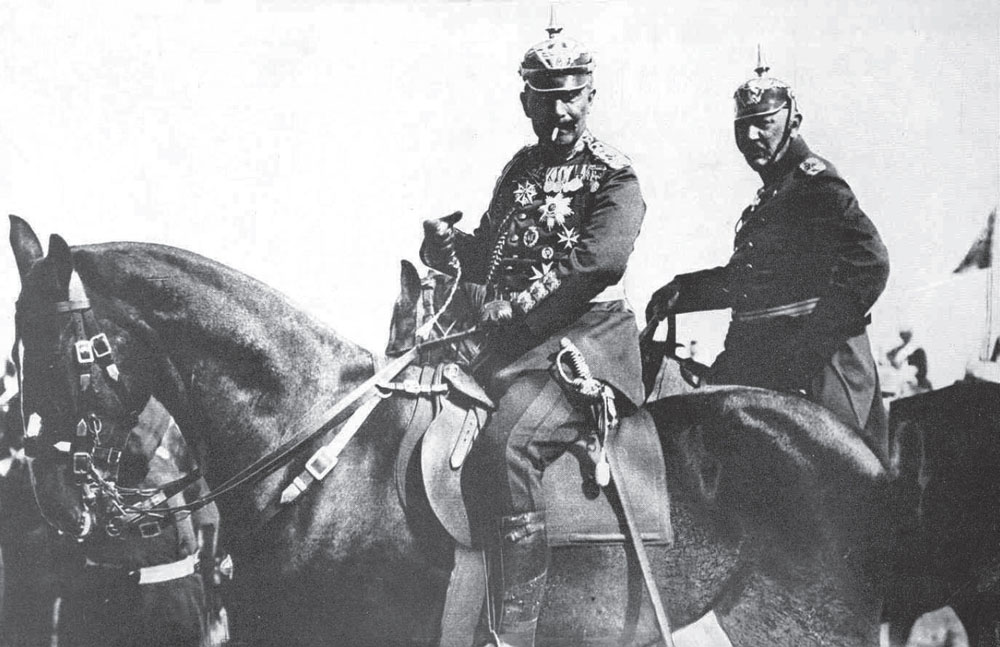
The Kaiser and Moltke.

The Kaiser and Ruprecht.
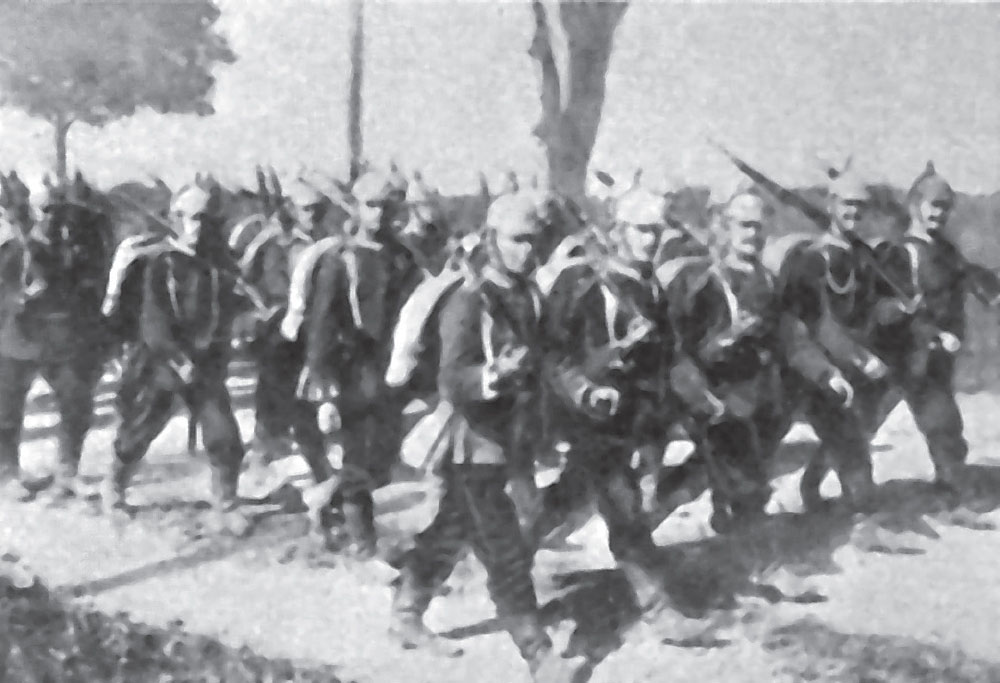
Cheerful German infantrymen on the march into Belgium.
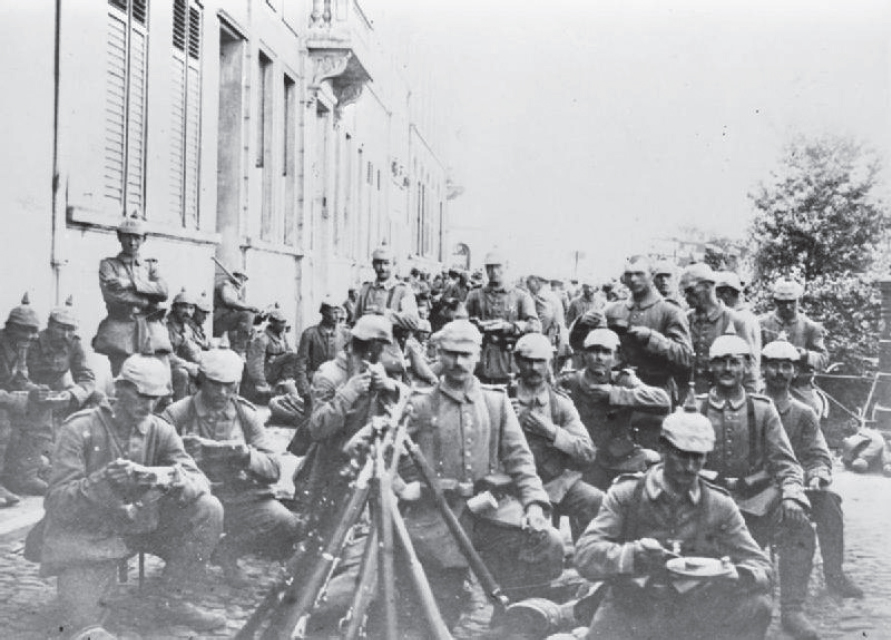
German troops at rest in Belgium 1914.
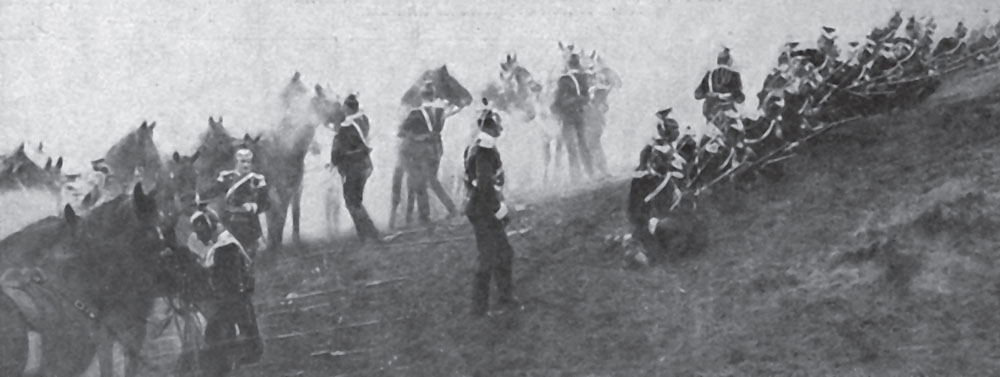
Light German cavalry conducting a reconnaissance. These mounted troops provide a screen in front of the advancing armies.
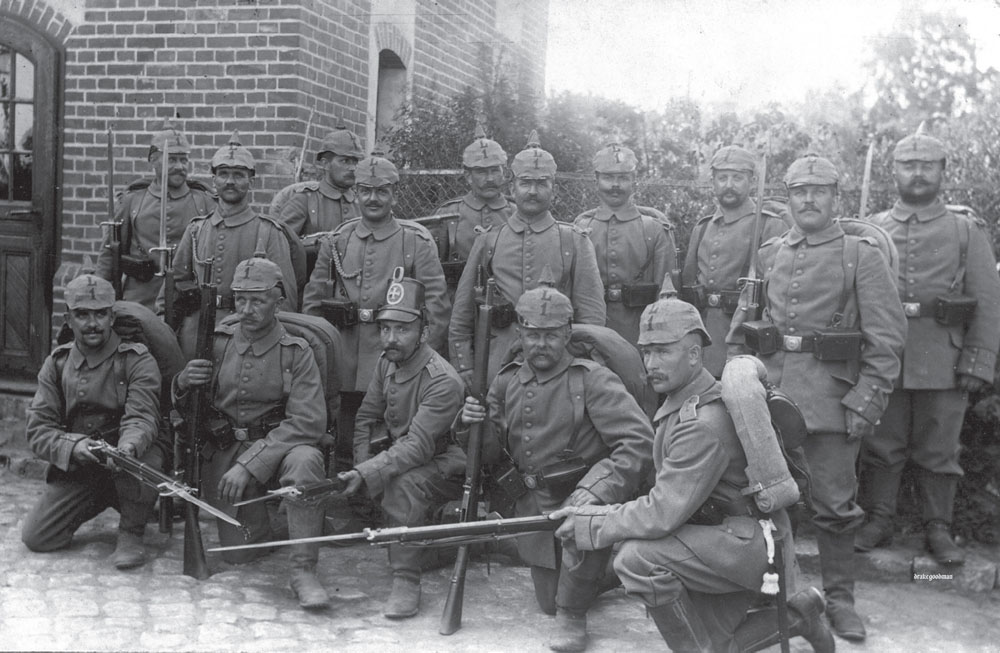
The men of Landwehr Infantry Regiment No. 1.
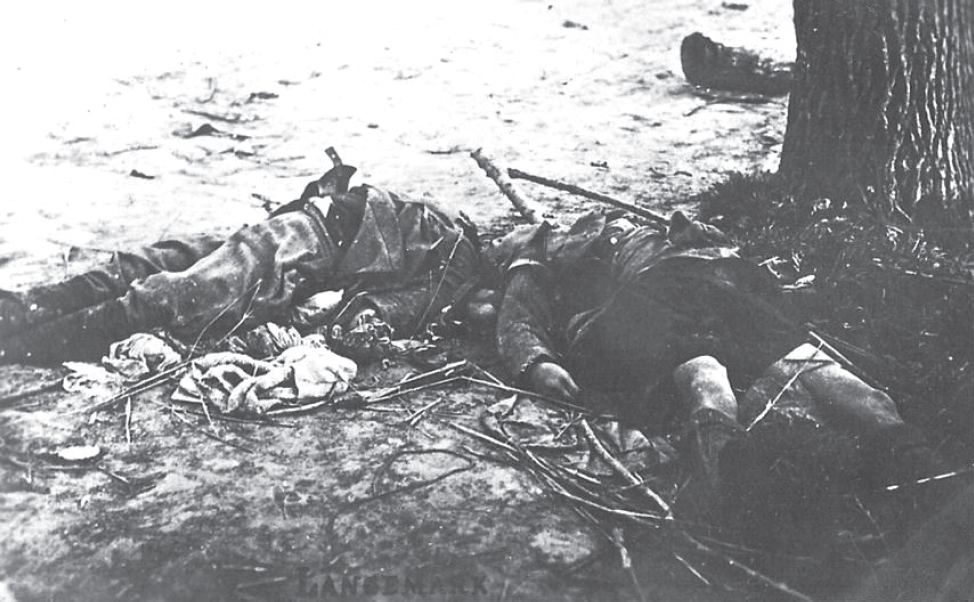
British and German dead lying side by side after hand to hand combat in Langemarck.
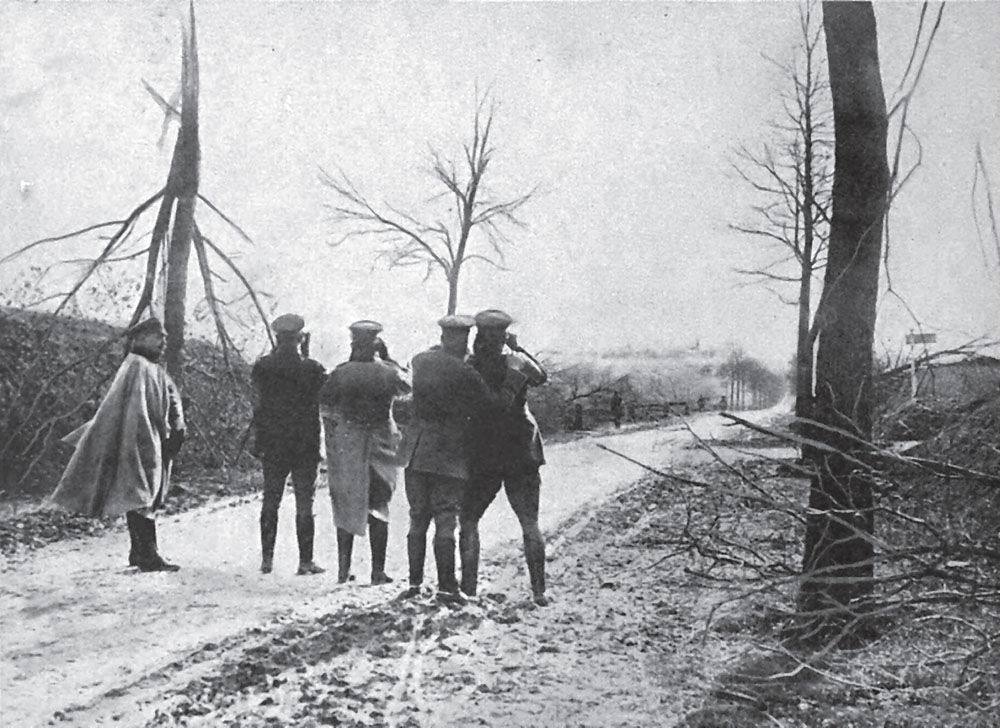
German officers observing the fall of artillery fire.
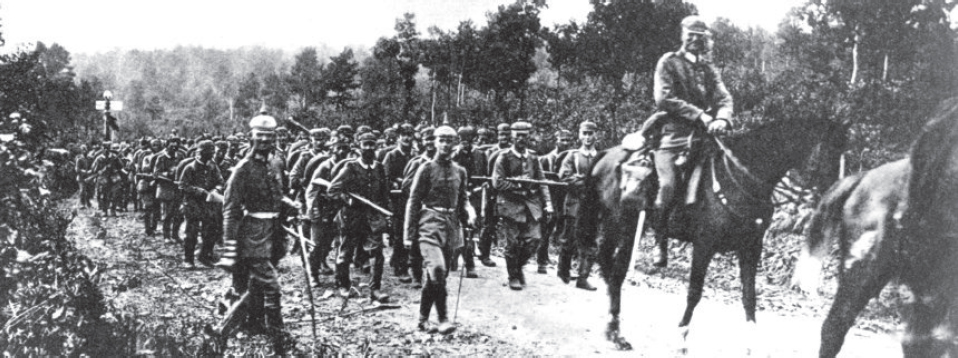
The German advance continues
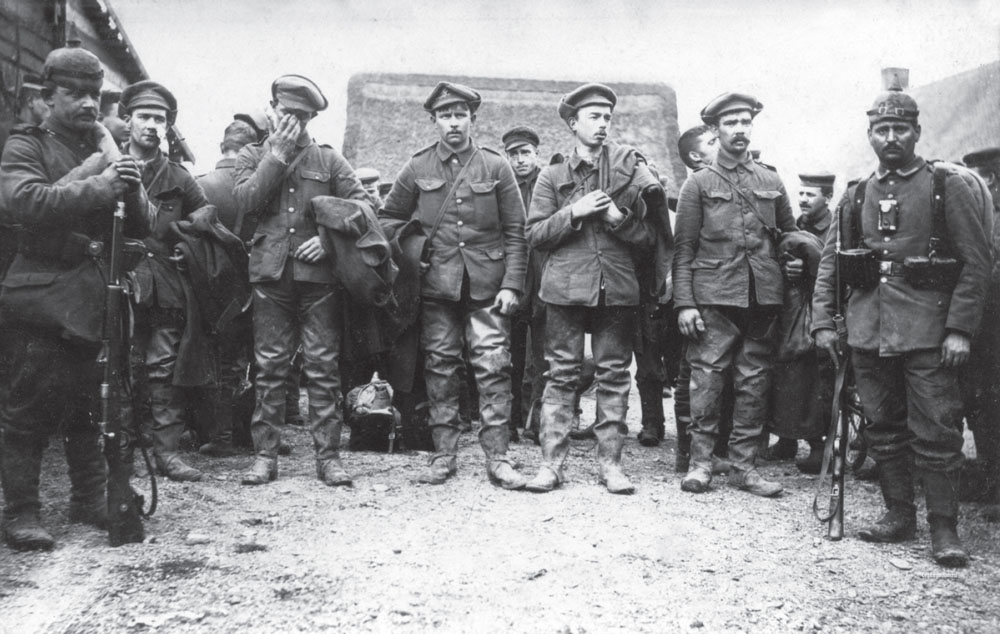
British prisoners with their German guards. These men faced four desolate and brutal years in captivity.
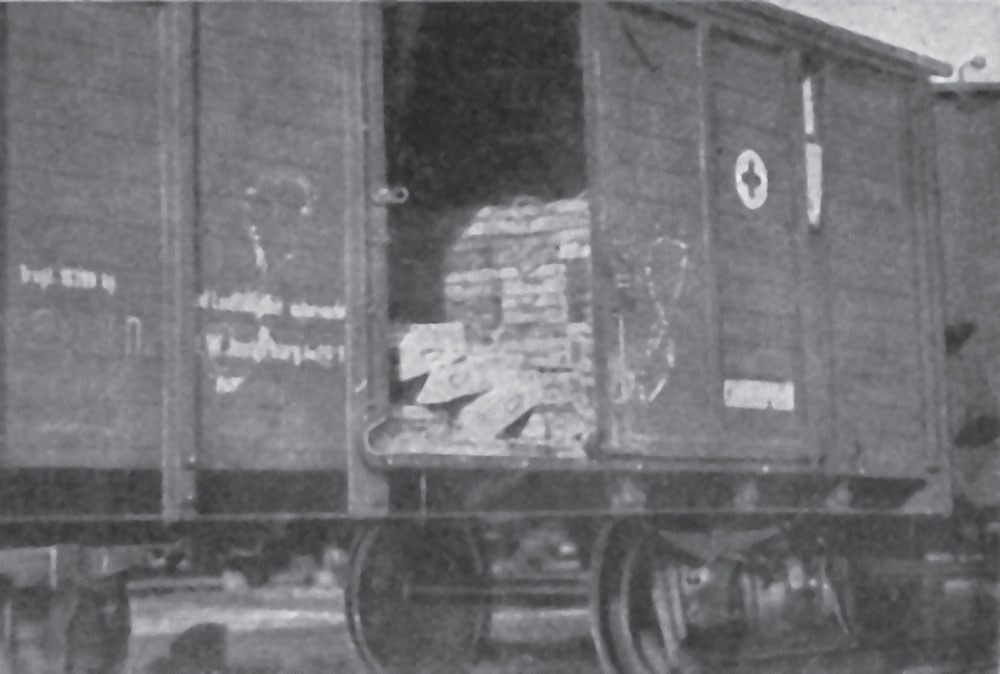
The German army was not above using the Red Cross as cover. Here ammunition was being transported in a rail carriage marked with the Red Cross.
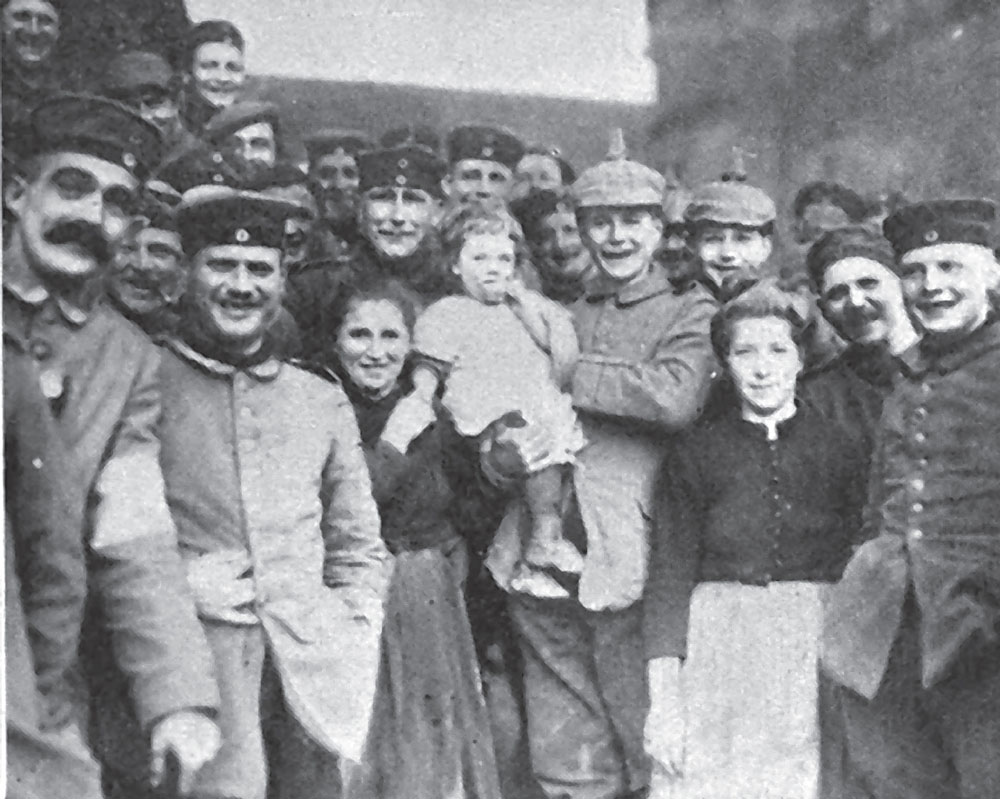
In order to counter the successful Allied propaganda campaign which depicted the Germans as barbarians this photograph of German soldiers enjoying cordial relations with the civilian population was widely circulated.
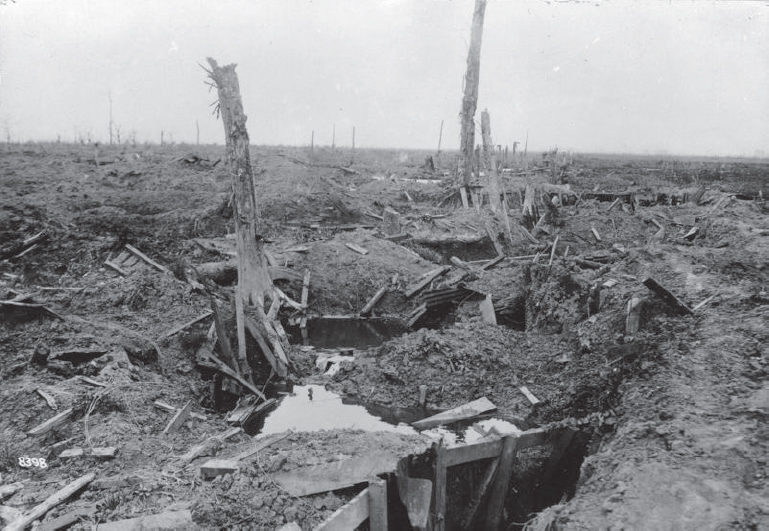
English trenches destroyed by German artillery near Armentiéres.
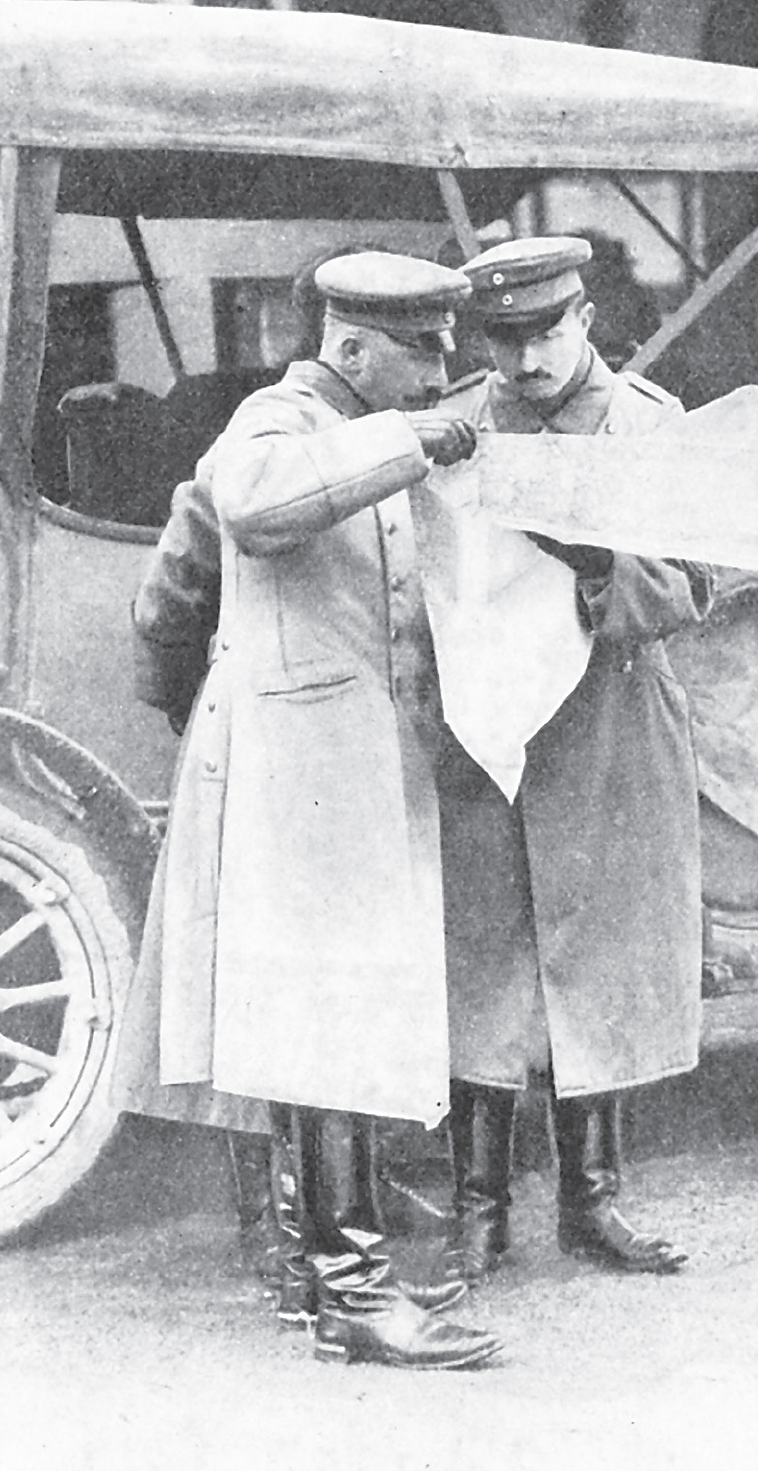
Kaiser consults a map.
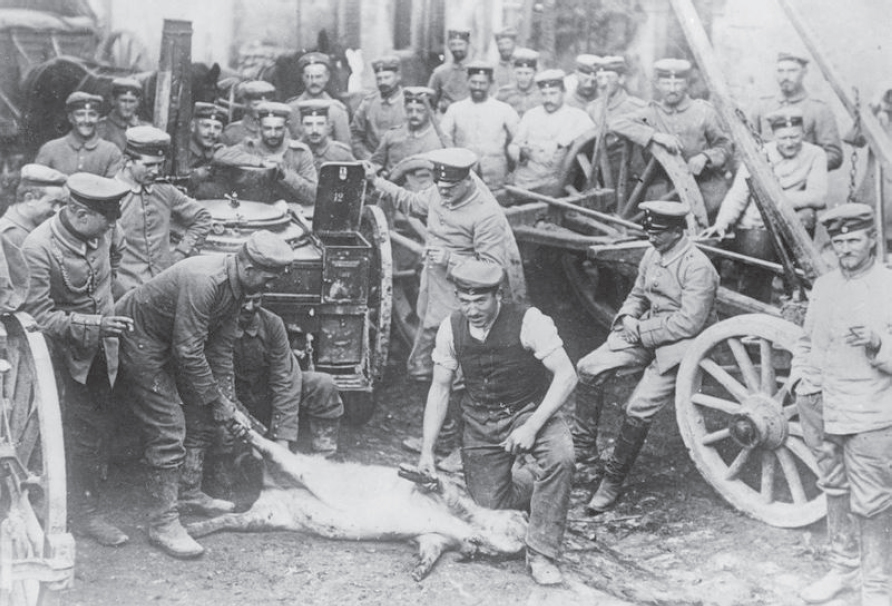
A field kitchen slaughtering its own ingredients under the hungry gaze of would be diners.
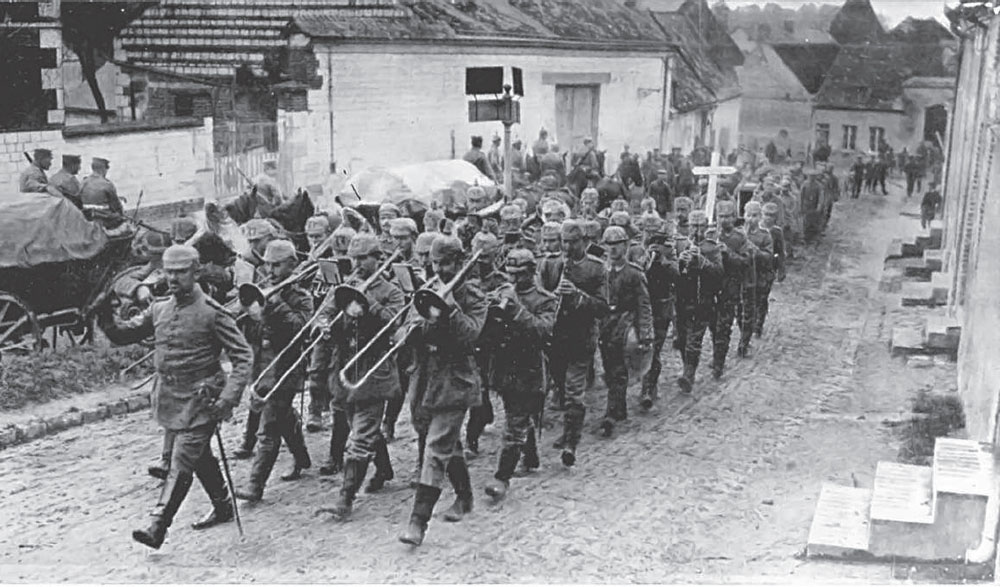
A German military band leads a church parade.
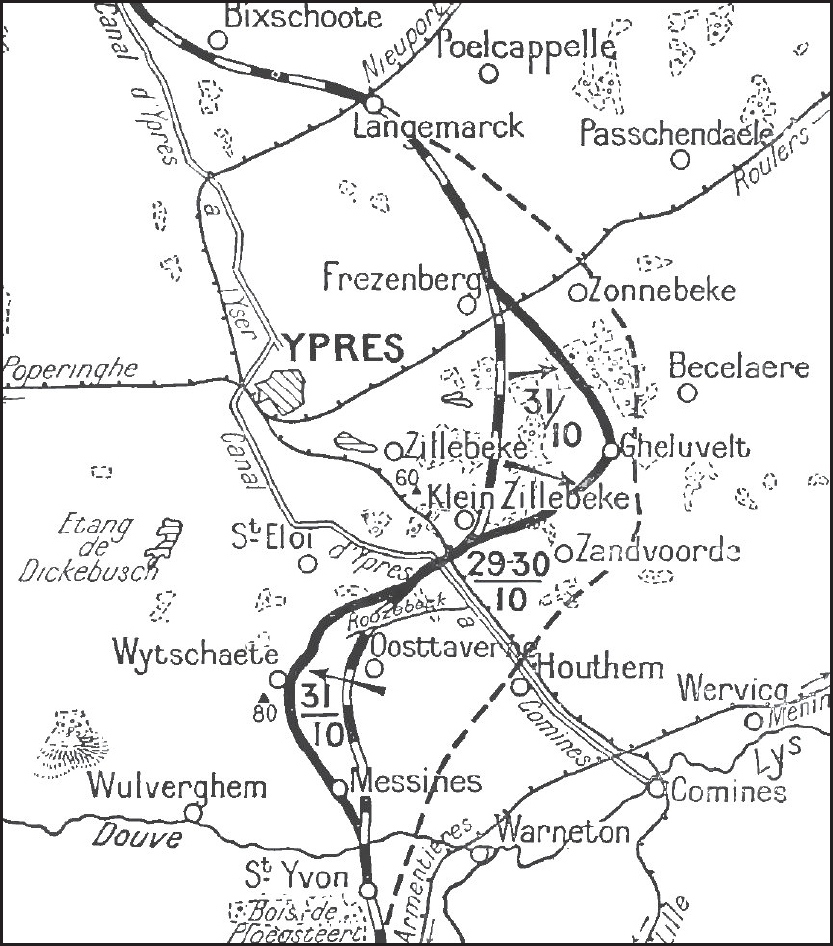
The Ypres salient 31st October 1914.
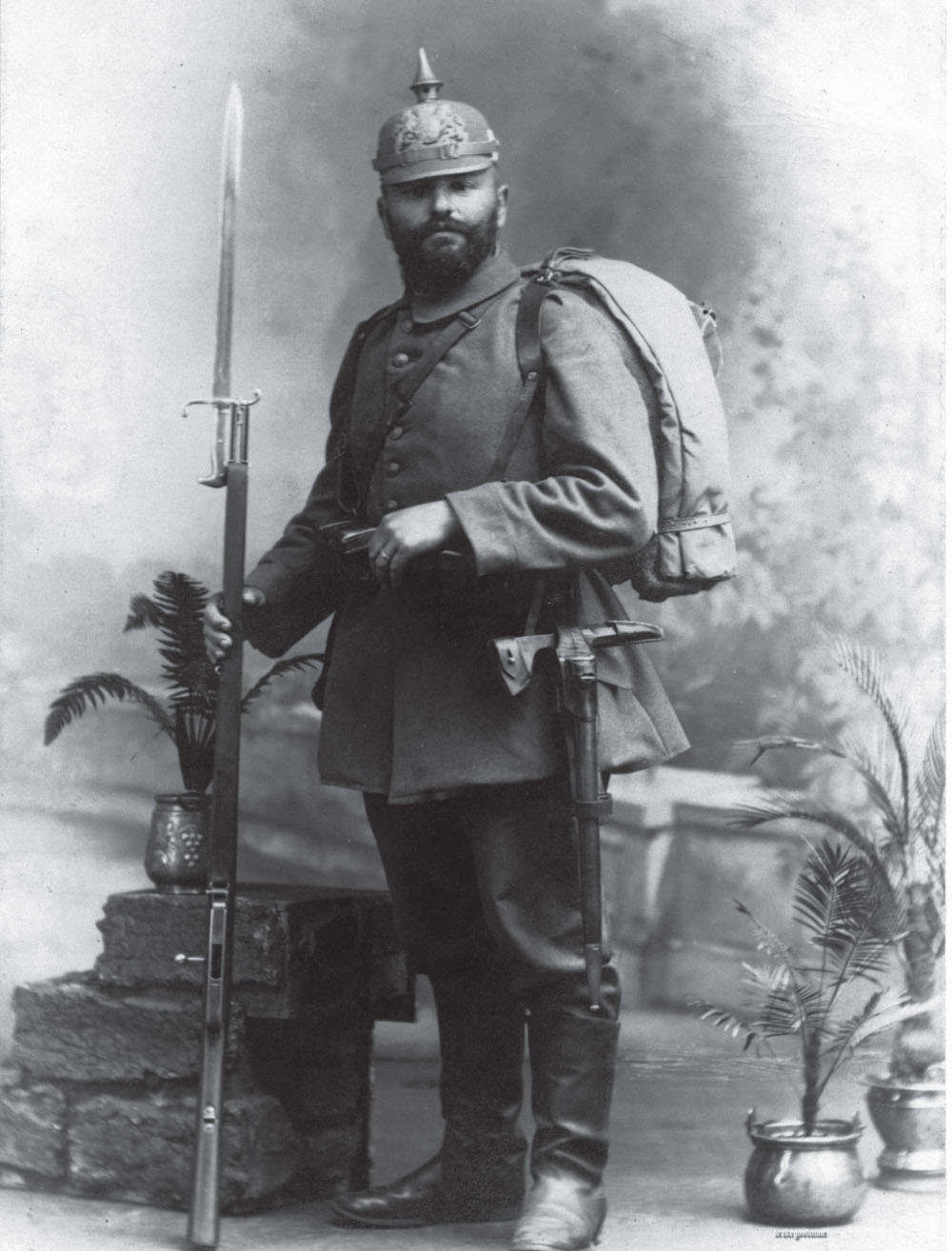
A good study of a Bavarian rifleman in full marching order.
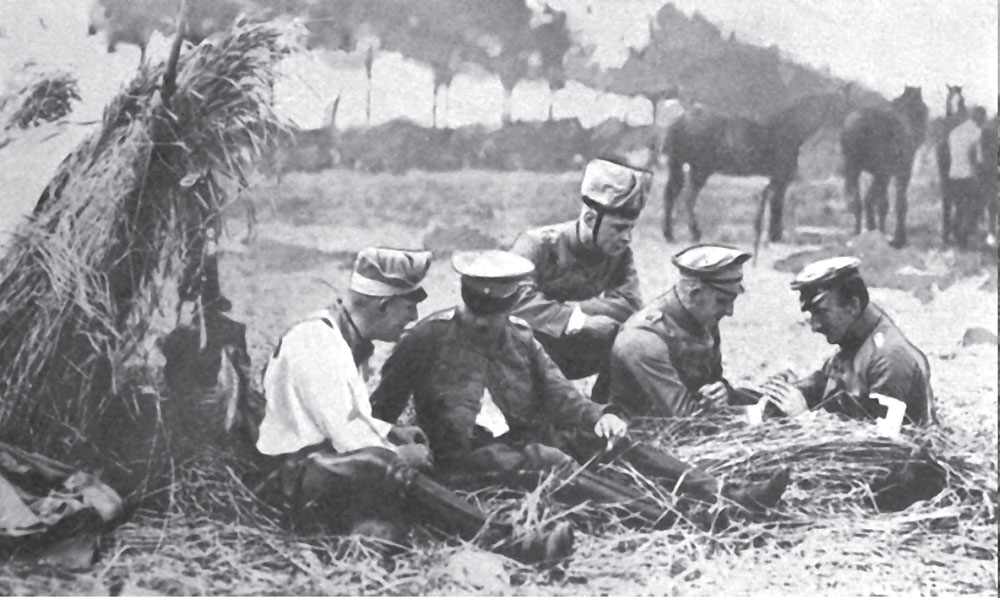
Lightly wounded German cavalrymen have their wounds tended in the aftermath of a skirmish outside Liege.
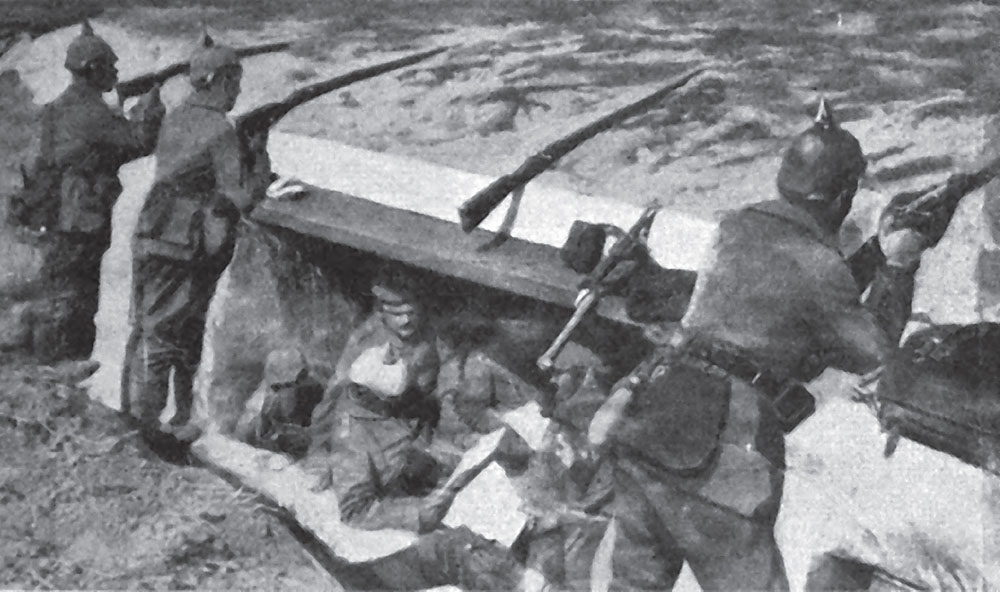
An excellent study of an early German trench. As the power of artillery grew simple structures such as this were proved woefully inadequate.
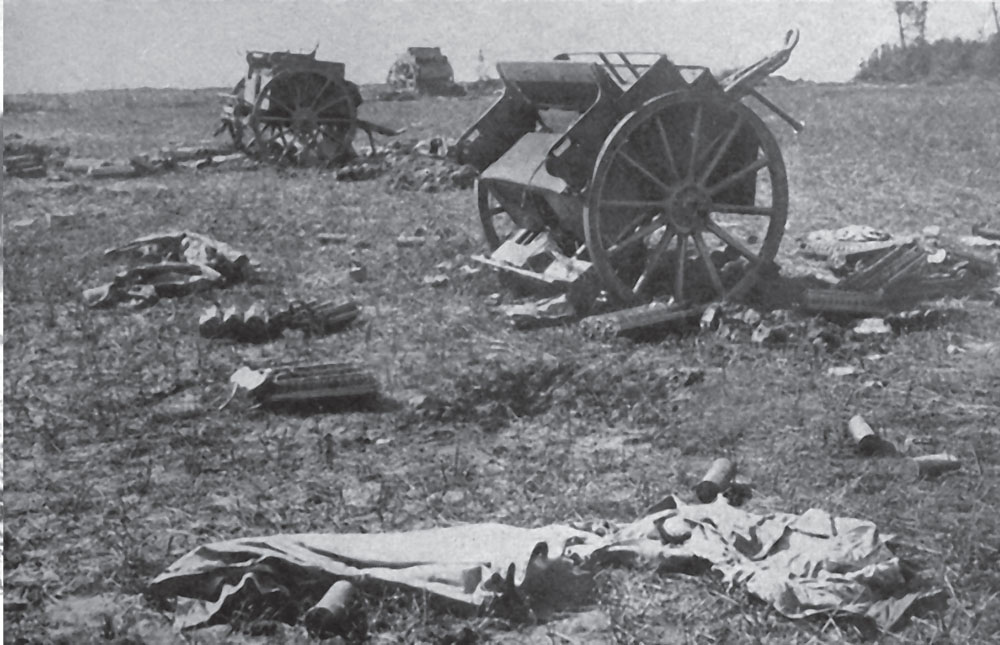
German limbers and ammunition lie discarded on the battlefield following the German retreat from the Marne.
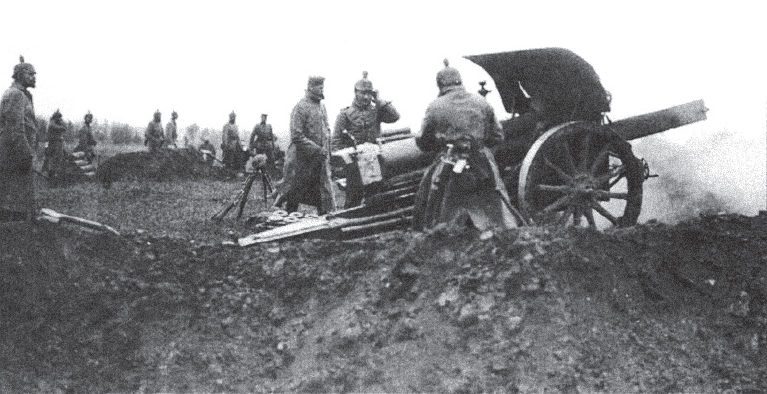
German field artillery in action.
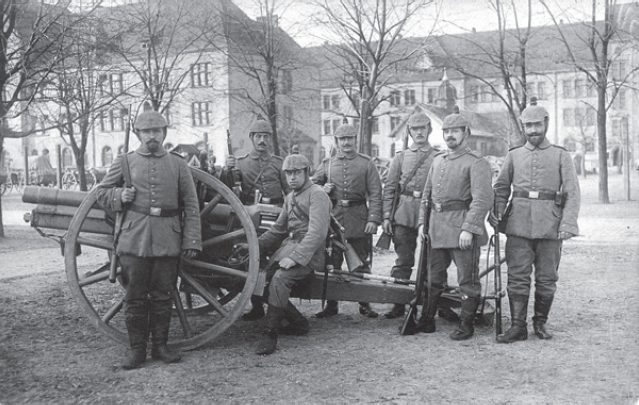
A German field gun crew.
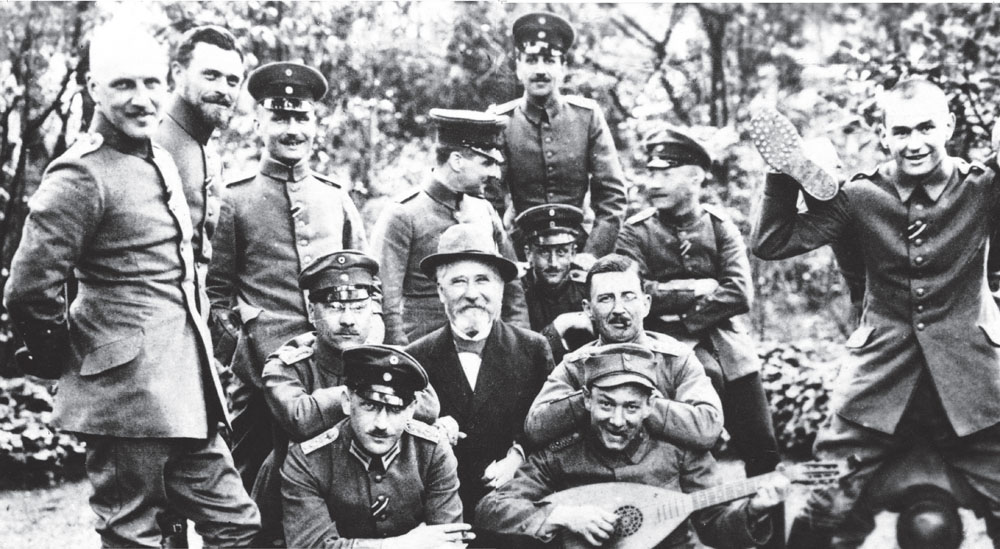
The German officer corps was the preserve of the nobility and the upper class, but they still found time for high jinks in front of the camera.
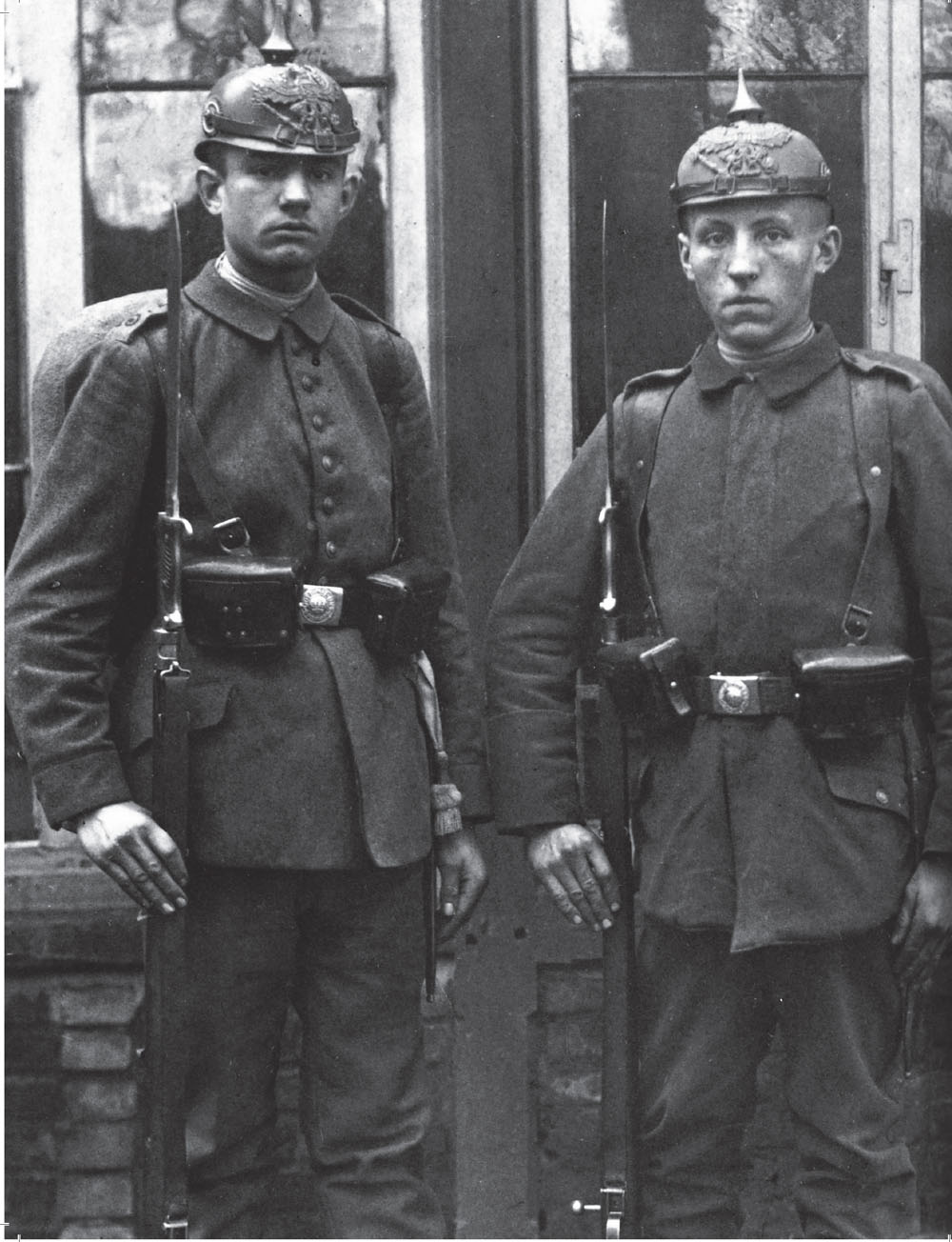
The warriors of 1914 pose for the camera.
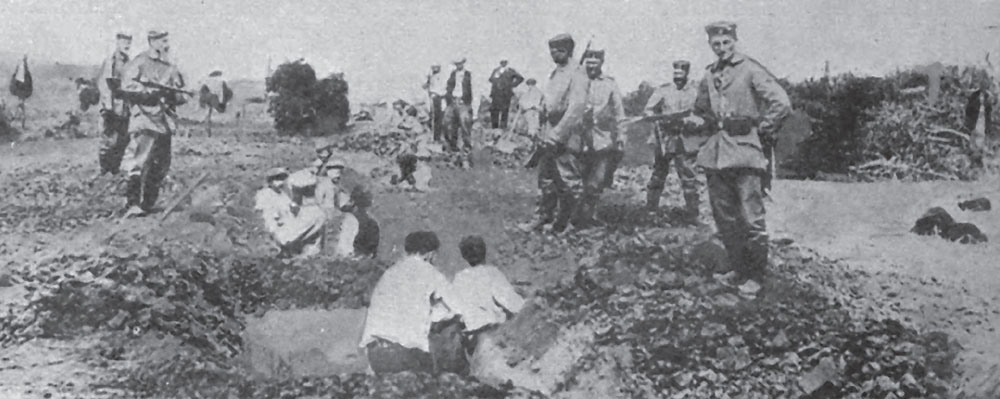
The beginnings of trench warfare. Here Belgian prisoners are forced to dig trenches to be occupied by their German captors. In a remarkably short time this network would soon extend from the Belgian coast all the way to the Swiss border.
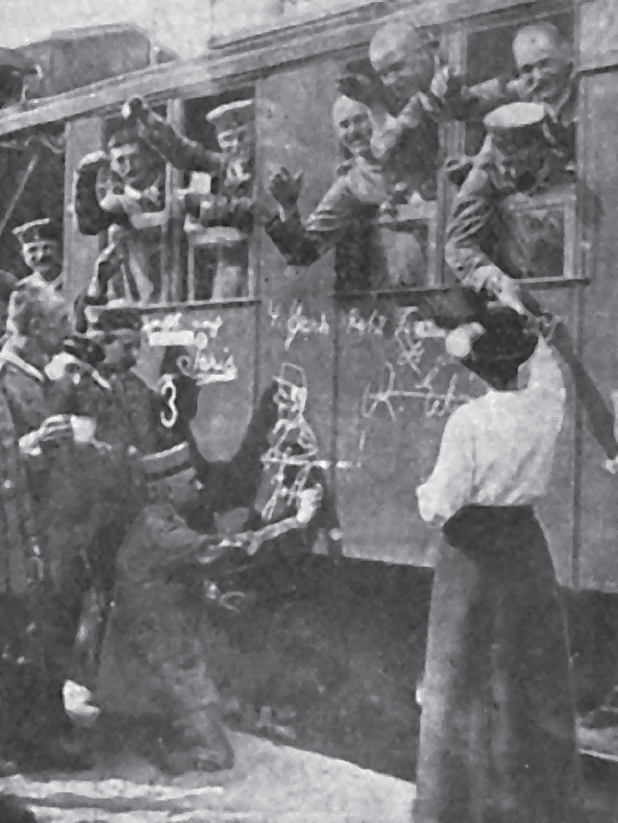
A German soldier draws a caricature of General Joffre on the wagon of a troop train. The artist has captioned his work ‘Express to Paris.’
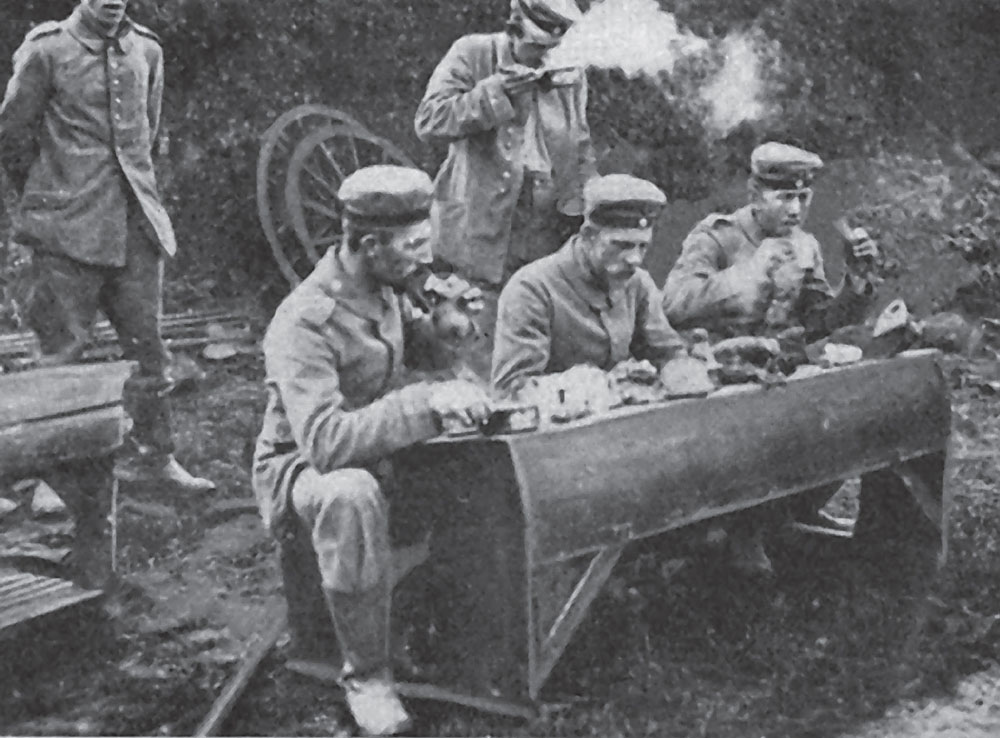
German soldiers dine alfresco at children’s benches removed from a Belgian schoolhouse.
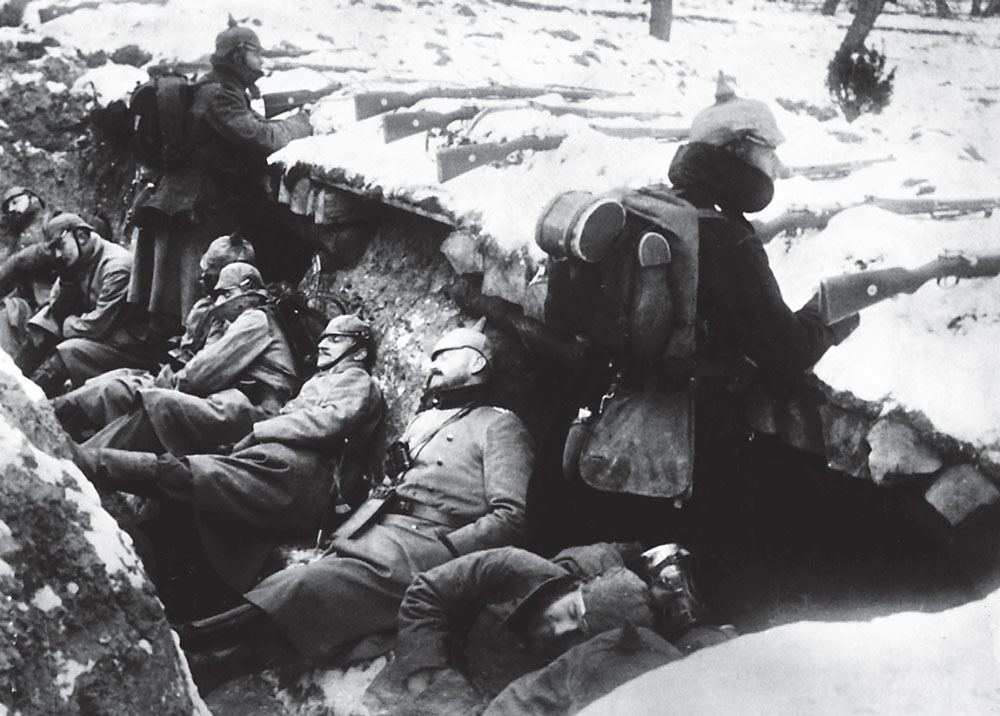
This photograph, which was taken prior to the 1914 Christmas truce, features German soldiers resting in their trench in the snow.
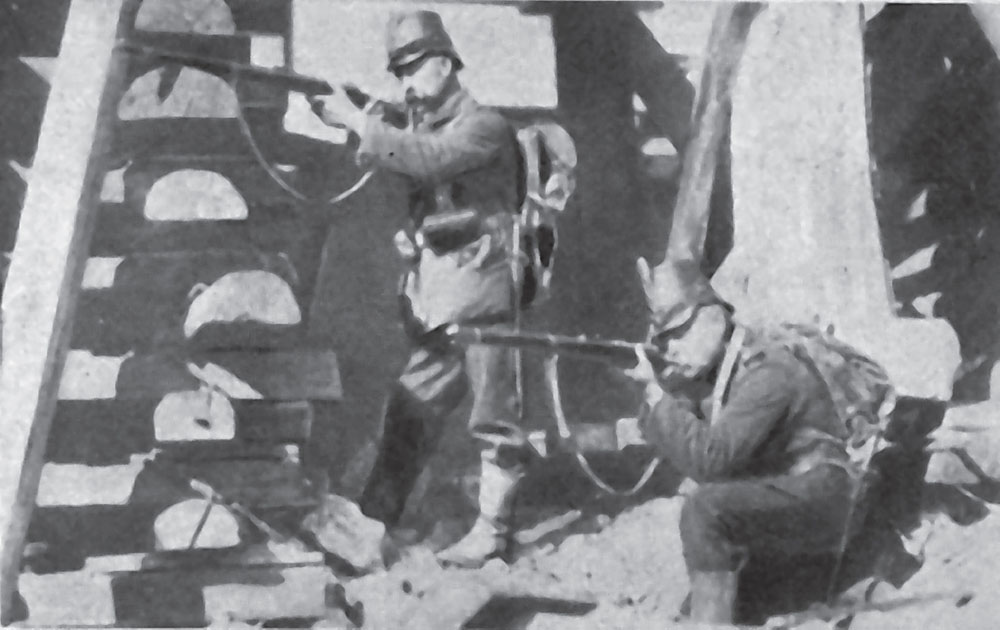
German jaegers taking up firing positions under a bridge destroyed by the retreating Belgian army.
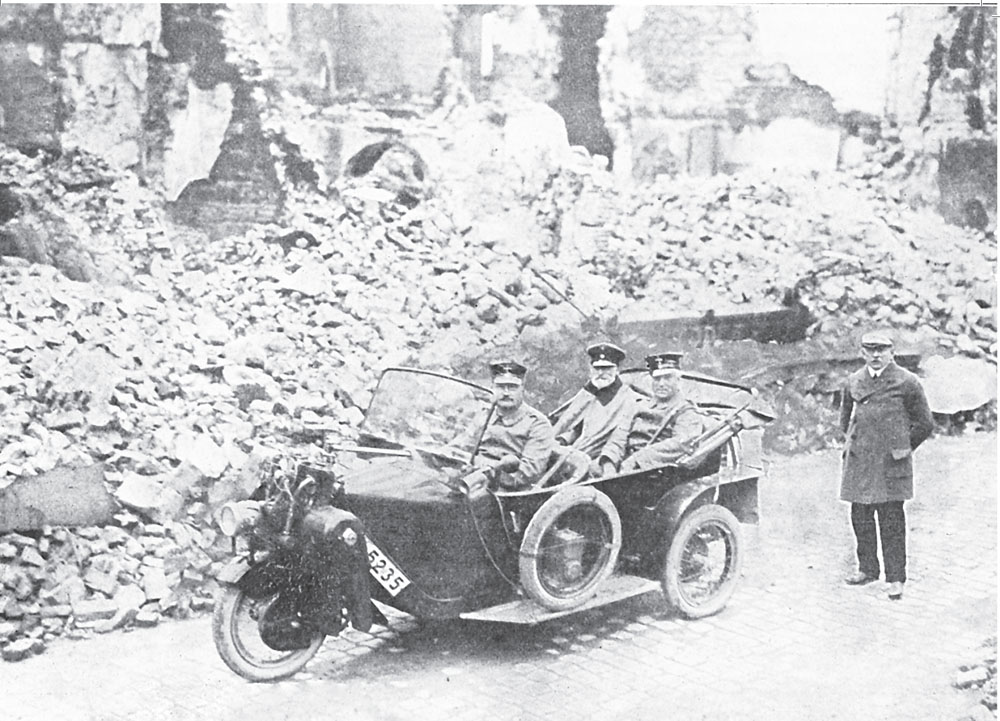
German staff officers being driven in an unusual three wheeled transport.

German troops, on September 1st, marching Into Amiens, the famous French city of about 100,000 Inhabitants which was later destined to become a key British supply centre.

The British held the left wing as the French army fell back from the Sambre to the Amiens-Laon line.
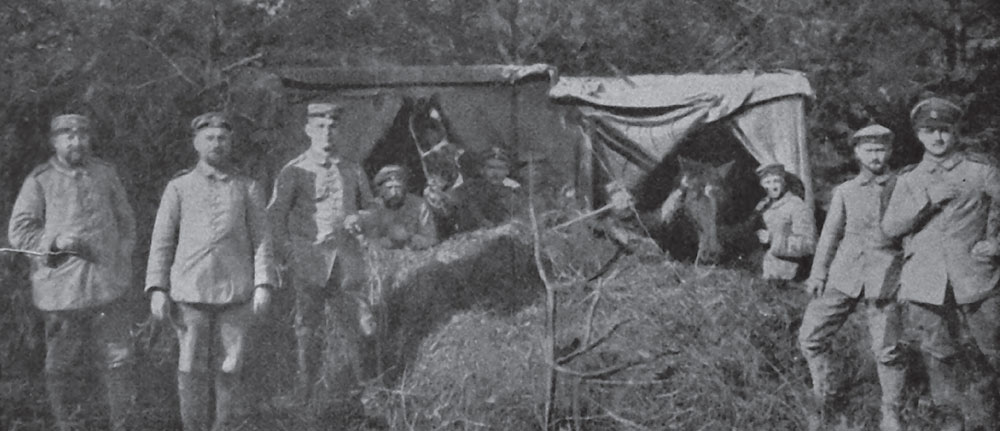
Improvised stables for some of the millions of horses which provided the power to transport the German armies.

German troops settle down in their crowded billet.